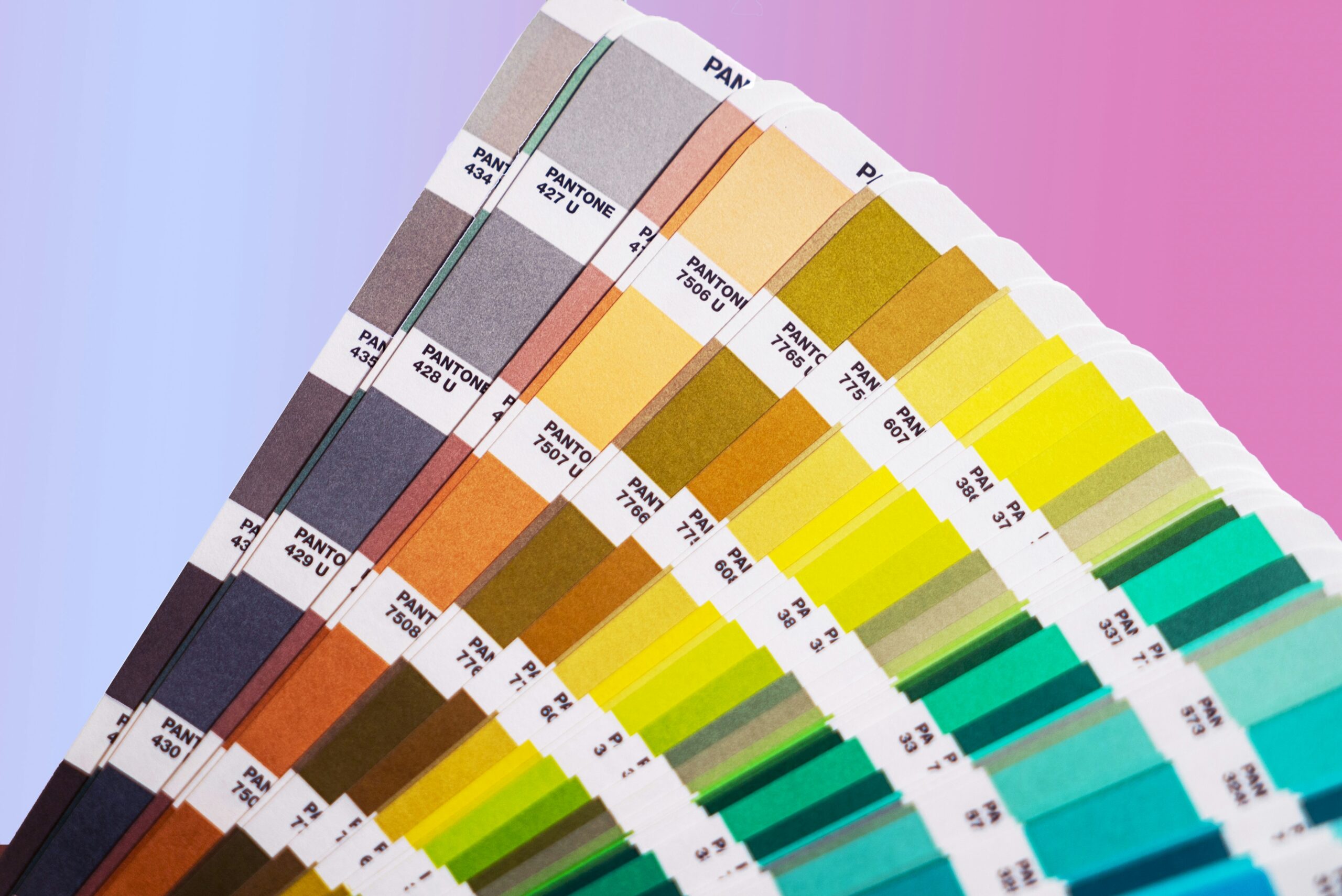In a world where business dynamics shift with the wind, the power of a strong first impression remains unwavering. It’s in the subtle interplay of visuals and messages where this impression takes root. Think of the meticulous attention to detail in a beautifully crafted brochure or the subtle charm of a well-designed product package; these are not mere business essentials. They are silent ambassadors of your brand’s story.
1. The Psychology of Colour and Design
The first brushstroke in the canvas of visual appeal is often a thoughtful blend of colour and design. When a customer first encounters your product, it’s the palette and patterns that speak before words can. In the realm of colour, each hue holds a universe of emotions – reds can energise, blues can soothe, and greens can renew. It’s not just about aesthetic pleasure; it’s about evoking the right feeling, the right response. The design, then, is the narrative that weaves these colours into a coherent story, whether it’s through the elegant simplicity of a product label or the dynamic layout of a brochure.
Key Points
- Colour Theory Application: Understanding how different colours influence customer emotions and decisions.
- Design for Impact: Utilising design elements like contrast, balance, and alignment to create visually appealing and effective business materials.
- Storytelling through Visuals: Crafting a narrative that aligns with your brand identity and resonates with your audience.
2. Material Matters: The Tactile Experience
Beyond the visual, the tactile quality of your business essentials forms a crucial part of the customer experience. It’s about the feel of the paper in a brochure, the sturdiness of a product box, or the smooth finish of a business card. These sensory experiences subtly reinforce your brand’s quality and attention to detail. Material choice not only reflects your brand’s values – such as a commitment to sustainability through recycled materials – but also impacts how customers perceive the durability and premium nature of your products or services.
Key Points
- Material Selection: Choosing materials that not only look good but feel right and reflect your brand’s commitment to quality and sustainability.
- Sensory Marketing: Leveraging the tactile aspect of materials to enhance customer engagement and memory recall.
- Practicality and Aesthetics: Finding the sweet spot between functional durability and aesthetic appeal in material choices.
3. Consistency is Key: Brand Identity Across Platforms
Maintaining a consistent brand identity across all platforms and materials is not just about recognition; it’s about creating a sense of reliability and trust. From the digital realm to the physical, every touchpoint with your brand should feel part of a unified whole. This consistency extends to the design elements – colours, fonts, imagery – and the tone of voice used in the content. Such coherence ensures that whether a customer is scrolling through your website or holding a printed brochure, they are immersed in a seamless brand experience.
Key Points
- Unified Design Elements: Ensuring that colours, fonts, and imagery are consistent across digital and print platforms.
- Cohesive Brand Messaging: Aligning the tone and message across all mediums to reinforce brand identity and values.
- Brand Recognition and Trust: Building a recognizable and reliable brand presence that resonates with customers and fosters loyalty.
4. Balancing Innovation with Practicality
Innovation in design and per se packaging printing brings a fresh perspective to your business essentials, distinguishing your brand in a crowded market. However, the true art lies in balancing this innovation with practicality. Embracing new trends and technologies can propel your brand forward, but it’s crucial to ensure these choices align with your brand’s objectives and budget. This balance is not about compromise; it’s about smart, strategic decisions that enhance your brand’s appeal without straining your resources.
Key Points
- Trend Adaptation: Integrating current design trends and printing technologies in a way that is relevant and beneficial to your brand.
- Cost-Effective Innovation: Identifying and implementing innovative solutions that offer high impact without high costs.
- Strategic Creativity: Utilising creative approaches that align with your brand’s goals and resonate with your target audience, while maintaining practical feasibility.
5. Storytelling through Every Element
Every aspect of your business essentials, from the choice of font in a brochure to the texture of your packaging, contributes to a larger narrative. This narrative is your brand’s story, told subtly through visuals and directly through content. Effective storytelling in design doesn’t just capture attention; it engages emotions and fosters a deeper connection with your audience. The goal is to create a cohesive and compelling story that not only represents your brand’s identity but also resonates with and captivates your customers.
Key Points
- Narrative-Driven Design: Ensuring every design element contributes to a cohesive and engaging brand story.
- Emotional Engagement: Creating designs that connect with customers on an emotional level, fostering brand loyalty and advocacy.
- Consistent Storytelling Across Platforms: Delivering a uniform narrative through both print and digital mediums to build a strong, recognizable brand presence.
Conclusion
Embarking on a journey to make a powerful first impression in business is about much more than aesthetics; it’s about weaving a compelling story through every visual and tactile element. This approach is crucial, especially in areas like hospitality printing, where every detail contributes to the overall brand experience. Begin your journey towards creating a lasting impact with a focus on quality and storytelling in every print and design decision.
Author Bio:
Nimesh Kerai
Serving as the Head of Printing at VC Print, Nimesh Kerai is a distinguished expert in the field. His remarkable technical skills, combined with his keen awareness of the latest advertising trends, have propelled the company to notable success. Over the years, Nimesh has gathered a wealth of knowledge, which he frequently imparts through engaging and informative blog posts.

